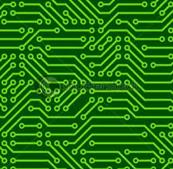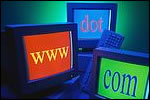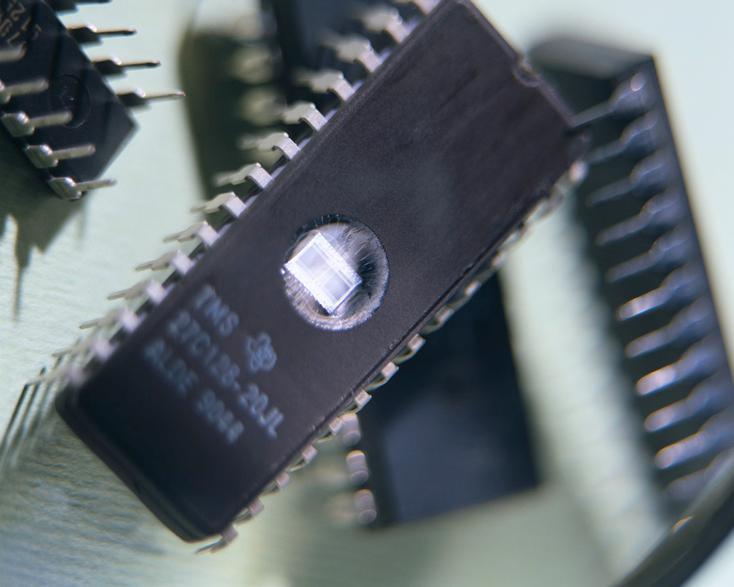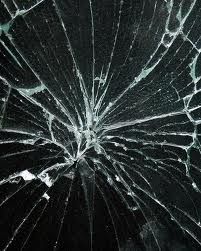| APPLIES TO: Macbook Pro |
| SYMPTOMS: When booting Macbook Pro a flashing Yellow Folder appears with a question mark on it. |
|
RESOLUTION: The flashing yellow folder is an indicator that the hard drive has failed, the hard drive connector has failed, or the system files needed to start-up and boot are corrupt.
STEP 1:
- Shutdown the entire system. If you cannot get the system to fully shut down you can force shutdown by holding the system's power button until it shuts down.
- Disconnect all peripheral devices printers, external hard drives and any network cables attached to your System.
- Restart your MAC system.
- If you still cannot boot the system continue to Step 2.
STEP 2 SAFE BOOT:
- Shutdown your system.
- Press and hold the Shift key and while holding the Shift key press the power button to start the system. This will start the safe boot.
- If by performing the safe boot, MAC performs as expected; restart the system normal. If the system will not start normal after this process continue to Step 3.
STEP 3 RESET PRAM/NVRAM:
- Shutdown your system.
- Press and hold the Command-Option-P-R keys before pressing the power button.
- Continue holding the keys until the system restarts and you hear the start-up sound for the second time.
- Release the keys. If your system still does not start continue to STEP 4.
STEP 4 TEST HARD DRIVE USING AN EXTERNAL DRIVE CABLE
- If you do not have an external hard drive cable proceed to Step 5. If you do have an external drive cable then continue.
- Using a Phillips #00 screwdriver remove the 10 screws securing the lower case to the MacBook Pro 13" Unibody. Keep track of where the screws belong since they are two different sizes.
- Carefully lift the lower case and push it toward the rear of the computer to clear the mounting tabs.
- Use the flat end of a spudger to lift the battery connector up out of its socket on the logic board and bend the battery cable slightly away from its socket on the logic board so it does not accidentally connect. *Suggestion: A piece of tape over the connector can help with this.
- Loosen the two Phillips screws securing the hard drive bracket to the upper case they will not fully come out of the bracket. Lift the bracket to allow for lifting the hard drive.
- Lift the hard drive using the pull tab. Only lift it far enough to remove the hard drive cables.
- If necessary remove the tape from the battery connector and reconnect the battery to the motherboard.
- Carefully secure the case bottom to the computer body using a few of the screws. Enough to just hold it in place while testing.
- Once the base is secured, turn the computer back over. Do not open the lid yet.
- Connect the hard drive to the external hard drive cable. Open the lid and press the power button to boot the system. Note: You may need to connect the charging cord to force the boot.
- Test if the system boots. If you system does boot off the external hard drive then you will need to replace the ribbon cable between the motherboard and the hard drive. If you still cannot boot the system continue to STEP 5.
STEP 5 REMOVE THIRD PARTY RAM
- Shutdown your system.
- Using a Phillips #00 screwdriver remove the 10 screws securing the lower case to the MacBook Pro 13" Unibody. Keep track of where the screws belong since they are two different sizes.
- Carefully lift the lower case and push it toward the rear of the computer to clear the mounting tabs.
- Use the flat end of a spudger to lift the battery connector up out of its socket on the logic board and bend the battery cable slightly away from its socket on the logic board so it does not accidentally connect. *Suggestion: A piece of tape over the connector can help with this.
- Locate the memory slots and remove any non-Apple or third party RAM.
- Reinsert the Apple RAM that came with the MAC. Please note that different OS X of MAC supports different sizes of minimum RAM.
- If your MAC starts successfully without any unexpected error while using your Apple RAM, then you should contact your third party RAM vendor for further troubleshooting.
STEP 6 TRY TO ACCESS THE HARD DRIVE FROM ANOTHER MAC
- Using external hard drive cables connect the hard drive to another Mac computer and attempt to read the hard drive. If you can read the hard drive then using the Mac tools try to verify and repair the hard drive.
- Once the hard drive has been verified and repaired return the hard drive to the original computer and attempt to boot again.
If you still continue to have problems contact the Genius Bar or a reputable computer repair professional.
|
| MORE INFORMATION: |
PROPERTIES: Last modified: 6/13/20 Revision: 1.0
|
| Keywords: Macbook hard drive failure, flashing yellow folder, mac won't boot |
NOTICE: If you found this article of value, please help us help underprivileged individuals to have hardware and software support at reasonable prices by donating below.
Mobile Mobile was started with the underprivileged in mind. People such as retired or elderly, young adults, single parents, and others are taken advantage of every day when trying to navigate and get help this world of technology. At Mobile Mobile we take the time to fix and also teach individuals one on one with phone and computer challenges that people face daily.






